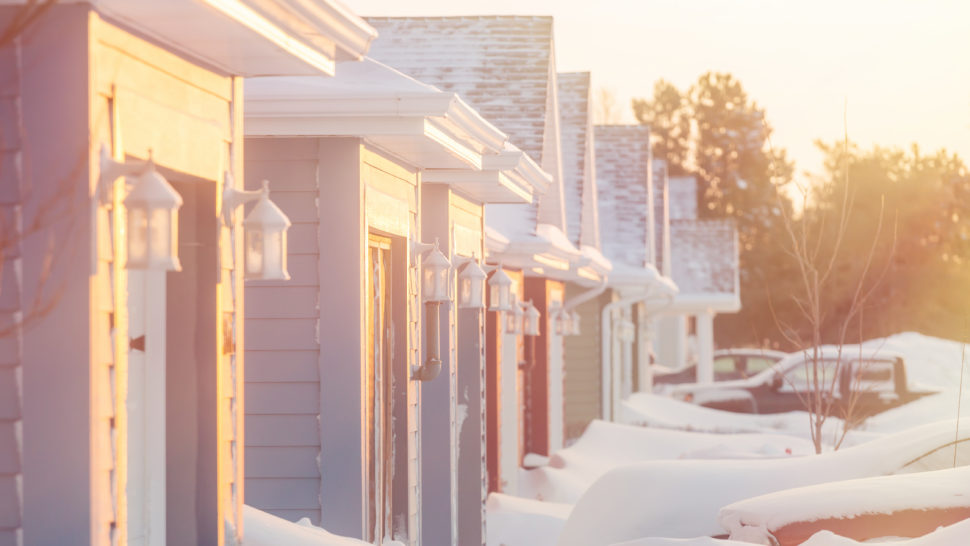Tips to Get Your HOA Ready for Winter


Winterization is a matter of simple chemistry. Freeze-thaw conditions cause expansion and contraction, and that leads to damage in cracks, pipes, or wherever water is easily trapped. It’s important to take a look around your community to see what you need to get ready for winter.
Pavement. Slurry-seal any cracks in pavement to prevent surface water from causing further cracking that ultimately will lead to potholes. The slurry seal may be applied in late spring or early fall, but the cracks must be sealed at the onset of the winter months to maintain the condition of the pavement.
Storm sewers. Storm sewer components should be kept clean and debris-free at all times but fall requires particular vigilance. Street-catch basins, lawn basins, detention basins, and retention basins should be inspected after trees have lost their leaves. Each of these structures, including rip-rap areas, should be cleaned thoroughly of all debris and leaves to prevent ice build-up, which may impede the flow of water through the system and off the site. Remove all vegetative growth from the basin inlet, outflow headwalls, and rip-rap. You should also remove any retention basin aerators and lights and store them.
Lawn irrigation systems. Watch for leaks in lawn irrigation systems and make repairs in the fall, before you shut the system off for the winter. This will save you time in the spring, since you’ll only need to replace damaged heads to get the system up and running again. Contract with a reputable company to drain the system. Proper drainage is accomplished by pumping pressurized air through the pipes to remove water, which will prevent your underground pipes from freezing and breaking.
Recreational facilities. Seal any cracks in outdoor tennis and basketball courts with appropriate products. Pay special attention to cracks around standing equipment (the fence and net posts on tennis courts, and the hoop posts on basketball courts). Remove and store tennis nets for the winter. If the courts are year-round, release the net tension unless they’re in use.

Pools. A reputable pool company will winterize a swimming pool by cleaning and draining it and installing the proper chemicals and cover. Most pools should never be drained completely for long periods of time, since ground water may float the pool right out of the ground. The pool filter system should also be drained to prevent cracked pipes during freeze-thaw conditions. Unheated bathrooms that service the pool should be shut down and the water drained from all the pipes.
Roofs. Roofs, especially those susceptible to ice damming, should be examined at the end of the fall, after your trees are bare. Remove any debris from your flat roofs. Clear roof drains and scuppers as well as downspouts that run at the exterior and interior of the building.
Sloped roofs with gutters and downspouts should also be cleaned every fall to prevent blocked water from freezing and exacerbating ice-damming conditions. Even if a roof is protected by eave flashing, the shingles remain vulnerable to damage, which can decrease the life of the roof system.
Faucets. Water faucets installed at the exterior of buildings should be turned off at the interior and drained for the winter. Even if the pipe that supplies the exterior faucet runs through a heated wall, the fixture will freeze at the exterior and may result in a burst pipe.
Another important part of getting your community ready for winter is to place all snowplow marker flags before the first ground freeze or snowfall. These flags mark the limits of the roadways to prevent curb and utility damage during snowplowing. Fire hydrants are required to be accessible at all times, and the markers identify clean out locations.
The process of winterization will vary depending on where your community is located. Whatever your situation requires, don’t wait until the last minute. If you do, you might be left out in the cold.
HOAresources.com explores questions and comments from community association members living in condominiums, homeowners associations, and housing cooperatives. We then assemble trusted experts to provide practical solutions to your most commonly asked, timely questions. We never use real names, but we always tackle real issues. Have a question or comment about your community association? Submit here for consideration:
Join CAI’s online community for access to the industry’s most in-demand community association resources.
Thousands of your peers are sharing advice.
Laura Otto is the Senior Editor of Digital Content at CAI. A seasoned journalist, Laura previously worked for a creative, advocacy agency in Washington, D.C., where she wrote and edited content for a variety of public health clients. Prior to that, Laura served as a senior writer and editor for the George Washington University School of Medicine and Health Sciences. Laura is a graduate of Temple University in Philadelphia.